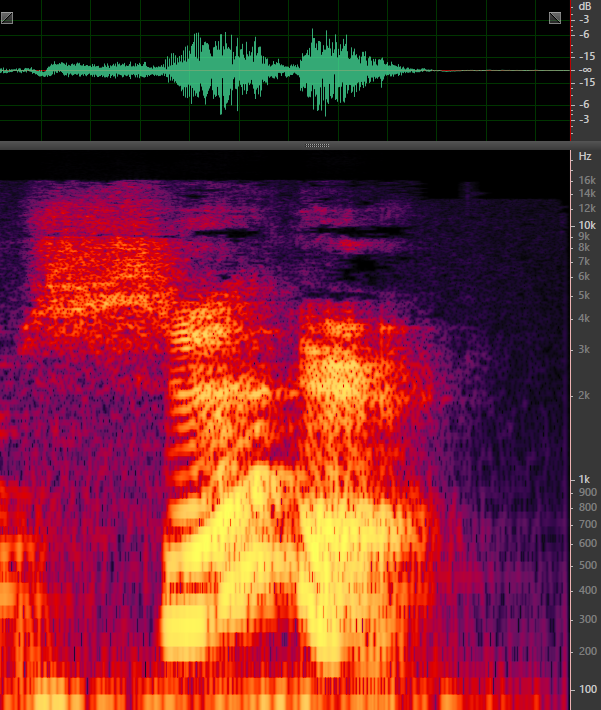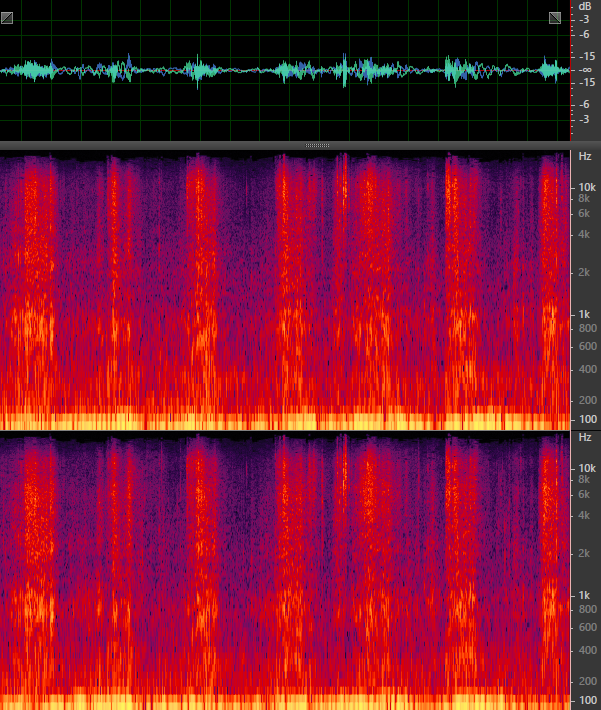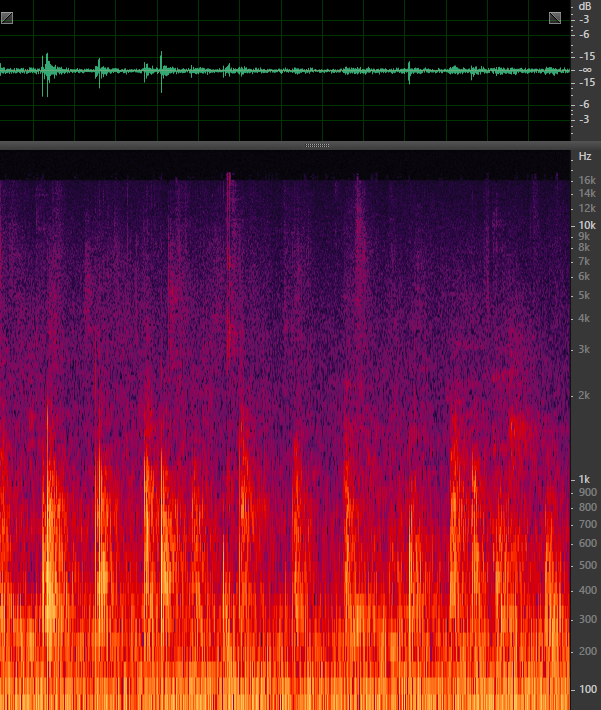Legacy Headset Benchmarking Methodology
Human Language, Animals & Movement
Male Vocals
Our test clip is a resounding "Yes, sir," similar to what you'd hear from a soldier in a testosterone-filled first-person shooter. So, we start by looking at the male voice's fundamental speech frequency, which has its lower end at about 150 Hz.
The overtone reproduction of the male voice lies between 1.5 and 3.5 kHz, which is what makes or breaks its timbre and unique characteristics. If this section of the spectrum is tampered with, voices lose their character, and spatial recognition suffers a lot.
The range between 3.5 and ~6.5 kHz is essential for determining how intelligible speech is. And depending on the voice's pitch, this region may even reach up to ~10 kHz. The sibilant sound is nicely visible in our spectrum analysis, with the drawn together "s" between "yes" and "sir."
In the range around 8 kHz, we also have breathing and air noises, which are especially important for whispered voices.
Female Vocals
Now, the fundamental frequency we're looking at is slightly higher, ranging between ~150 Hz and 450 Hz in the lower mid-range. Our previous assertions about overtone reproduction and sibilants, as well as speech recognition and breathing/air noises, apply here as well. The sibilant "s" sound at the beginning of the word "sugar," as well as measurable air noises, are easily recognizable.
In a direct comparison between neutral sound production and gaming headsets, good, linear headphones (almost) always win. A dip at 400 to 500 Hz has negative consequences for female vocals and long-barrel rifles. However, an overemphasis at ~8 to 10 kHz might slightly increase the perception of whispered words and low-intensity speech. This can just as easily be balanced with a neutral device and an equalizer, without punishing you with permanent peaks where they aren't necessary.
Jungle Noises With Animal Sounds
The sound of a jungle filled with four-legged sources is much more complex than human voices, occupying mid-range and higher frequencies.
Get Tom's Hardware's best news and in-depth reviews, straight to your inbox.
Walking On Gravel Outdoors
Small, sharp-edged stones rolling off, being compressed, and jumping away produce a delicate soundscape. The dominant sound ranges down to around 150 Hz, while highlights may reach up to 20 kHz (and higher). Consequently, a true-to-life reproduction requires the most linear curve possible. Any under- or over-emphasis has a strong influence on the sound's character.
To illustrate this in more detail, both channels appear one on top of the other so that interaural time and level differences are more visible. Stones facilitate a readily apparent spatial impression, as this multitude of particles doesn't behave like a single source.
Walking On Solid Ground Indoors
The frequency band of the step itself is balanced between a range of ~180 Hz to 6 kHz, while highlights reach up to about 16 kHz. At the same time, the room creates more or less diffuse reflections, which are easily recognizable between the individual steps in our spectral analysis. Our example uses a garage with concrete flooring.
The basic impact sound is found at about 250 Hz, while the surround component of this echoic room extends from ~500 Hz to ~5 kHz. If aggressive sound design is used here, basements that are supposed to sound a bit muffled may seem too accentuated, while a large hangar may sound like a drainage pipe.
Walking On Snow
This is a broad-band sound that requires linear reproduction across the entire frequency range. If individual areas are missing, the ground may sound sandy or muffled. On the contrary, playback may become too accentuated, leaving a metallic impression.
Walking On Grass
If the lower mid-range is missing, a sneaky sniper can sound more like a noisy infantry grunt. The primary frequency range only extends to ~1.5 kHz. Therefore, a balanced reproduction curve up to 2 kHz is particularly important.
The fairy tale of allowing gamers to more audibly hear their opponents sneaking up through pricier headphones is nothing but a PR myth. After all, the frequencies generated by a wide variety of surfaces are just as diverse as the surfaces themselves, making it impossible to emphasize all of them in a meaningful way through sound design. The best solution is thus linear!
MORE: Best Deals
Current page: Human Language, Animals & Movement
Prev Page Sound Design: Marketing Gimmick Or Force Multiplier? Next Page Typical Vehicle & Combat Sounds
Igor Wallossek wrote a wide variety of hardware articles for Tom's Hardware, with a strong focus on technical analysis and in-depth reviews. His contributions have spanned a broad spectrum of PC components, including GPUs, CPUs, workstations, and PC builds. His insightful articles provide readers with detailed knowledge to make informed decisions in the ever-evolving tech landscape






